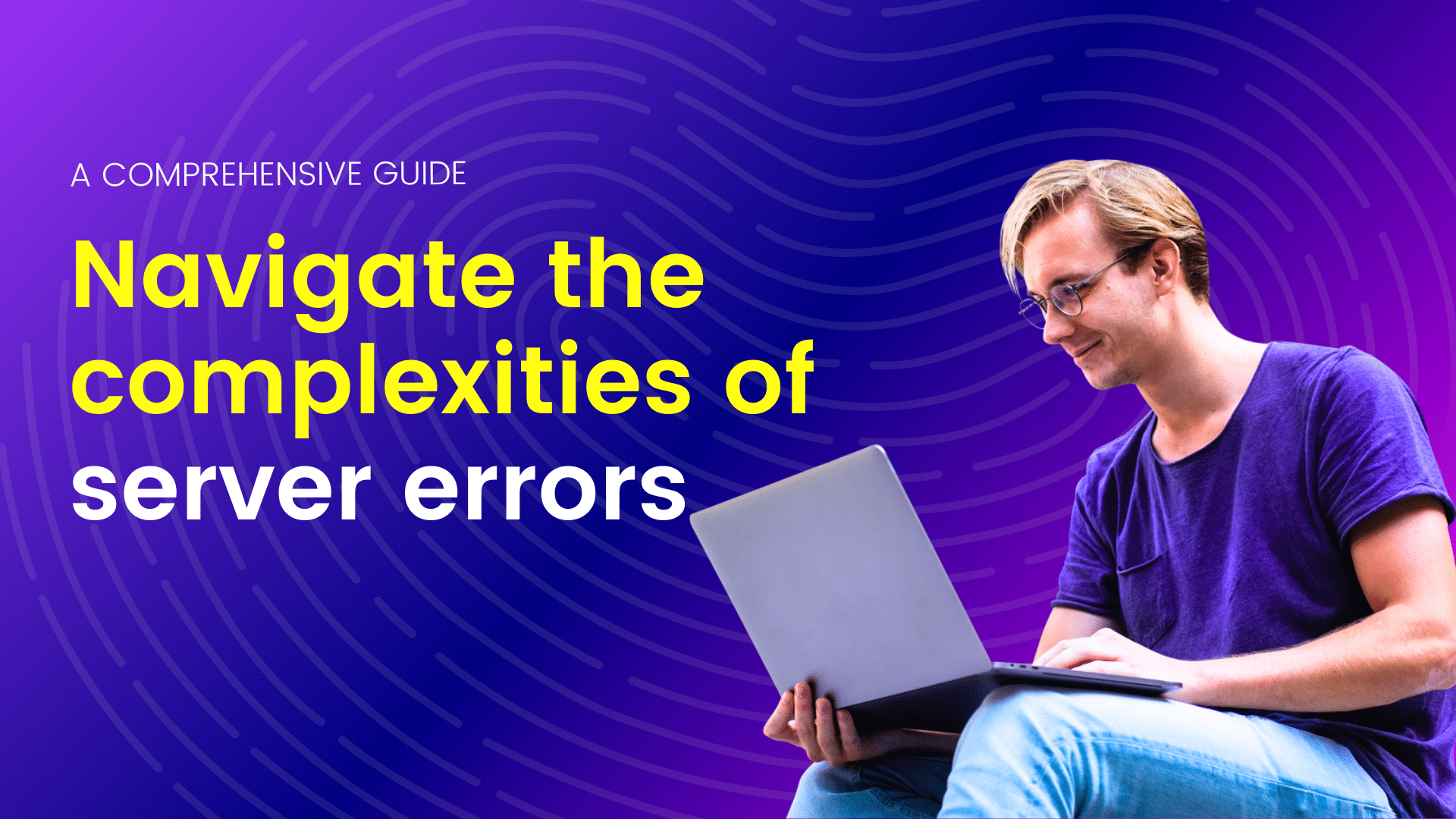In the vast world of website building platforms, WordPress stands out as a versatile and powerful tool. While the ease of use of platforms like WordPress.com attracts many users, there’s a segment of website owners who prefer more control and customization. For these individuals, self-hosted WordPress is the go-to choice.
Self-hosted WordPress offers unparalleled flexibility, enabling users to have complete control over their websites. Whether you’re a blogger, a small business owner, or a developer, self-hosted WordPress provides the tools needed to create, manage, and grow your online presence. But flying solo with self-hosted WordPress requires some groundwork and understanding. Here’s a comprehensive guide to help you navigate this journey:
What is self-hosted WordPress?
Self-hosted WordPress refers to running the WordPress content management system (CMS) on your own web server or hosting environment rather than using WordPress.com’s hosting service. When you self-host WordPress, you download the WordPress software from WordPress.org and install it on a web server of your choice. This gives you full control over your website, including customization options, access to all WordPress themes and plugins, and the ability to manage your site’s performance, security, and backups.
Self-hosted WordPress offers more flexibility and control compared to using WordPress.com, where certain features and customization options may be limited. With self-hosted WordPress, you can create a fully customized website or blog tailored to your specific needs and preferences. However, it also means you’re responsible for managing your own hosting, updates, security, and backups, which requires some technical knowledge or the assistance of a web developer or hosting provider.
Understanding Self-Hosted WordPress
Self-hosted WordPress, often referred to as WordPress.org, is the open-source version of WordPress. Unlike WordPress.com, where your website is hosted on WordPress servers, self-hosted WordPress allows you to host your website on your own server or a third-party hosting provider.
Benefits of Self-Hosted WordPress
- Complete Control: With self-hosted WordPress, you have full control over your website. You can customize every aspect of your site, from design to functionality.
- Flexibility: The extensive library of themes and plugins available for self-hosted WordPress allows you to add features and customize your site to meet your specific needs.
- Ownership: You own your website and all its content. You’re not bound by the terms and conditions of a third-party platform.
- Scalability: Self-hosted WordPress can scale with your business or website’s growth. As your needs evolve, you can easily upgrade your hosting plan or add new features.
Getting Started with Self-Hosted WordPress
- Choose a Domain Name: Select a domain name that reflects your brand or website. Ensure it’s memorable and easy to spell.
- Select a Hosting Provider: Choose a reliable hosting provider that offers WordPress hosting. Consider factors like uptime, customer support, and scalability.
- Install WordPress: Most hosting providers offer one-click WordPress installation, making the setup process quick and straightforward.
- Choose a Theme: Select a WordPress theme that aligns with your brand and website goals. You can choose from thousands of free and premium themes available in the WordPress theme directory or third-party marketplaces.
- Customize Your Site: Personalize your website by customizing the theme, adding your logo, configuring menus, and setting up essential pages like About, Contact, and Blog.
- Install Essential Plugins: Enhance your site’s functionality by installing essential plugins. These may include SEO plugins, security plugins, caching plugins, and others depending on your needs.
Managing and Growing Your Self-Hosted WordPress Site
- Regular Updates: Keep your WordPress core, themes, and plugins updated to ensure optimal performance and security.
- Backups: Regularly back up your website to prevent data loss in case of emergencies.
- Security Measures: Implement security measures such as strong passwords, SSL certificates, and security plugins to protect your site from hackers and malware.
- SEO Optimization: Optimize your website for search engines by using SEO best practices, such as optimizing meta tags, creating high-quality content, and building backlinks.
- Engage with Your Audience: Interact with your audience through comments, social media, email newsletters, and other channels to foster engagement and build a loyal following.
Navigating the Skies of Self-Hosted WordPress: Important Considerations for Flying Solo
In the vast landscape of website creation, self-hosted WordPress stands as a beacon of versatility and control. Flying solo with self-hosted WordPress means taking charge of your digital destiny, but it also requires careful navigation through the complexities of web hosting, maintenance, and security. Whether you’re a seasoned developer or a novice blogger, here are some crucial considerations to ensure your journey with self-hosted WordPress is smooth and successful.
Choose the Right Hosting Provider
Selecting a reliable hosting provider is paramount. Look for providers that offer optimized WordPress hosting with features like one-click WordPress installation, automatic updates, and robust security measures. Consider factors such as uptime guarantees, customer support quality, scalability options, and server performance.
Stay Updated
Keeping your WordPress core, themes, and plugins updated is essential for security and performance. Enable automatic updates whenever possible to ensure you’re running the latest versions and patches. Regularly review and remove outdated or unused plugins and themes to minimize security risks and streamline your site’s functionality.
Implement Strong Security Measures
Securing your self-hosted WordPress site is crucial to protect against cyber threats and vulnerabilities. Utilize security plugins, implement SSL certificates for encrypted communication, and employ strong passwords for your WordPress admin area, FTP accounts, and database. Consider additional security measures such as two-factor authentication and web application firewalls to fortify your defenses.
Backup Your Site Regularly
Data loss can be catastrophic for any website owner. Implement a robust backup strategy to safeguard your content, files, and database. Choose backup solutions that offer automated, scheduled backups stored both locally and offsite for redundancy. Regularly test your backup restoration process to ensure it’s reliable in case of emergencies.
Optimize Performance
Page speed and performance are critical factors for user experience and search engine rankings. Optimize your self-hosted WordPress site by leveraging caching mechanisms, optimizing images, minifying CSS and JavaScript files, and utilizing content delivery networks (CDNs). Regularly monitor your site’s performance metrics and address any bottlenecks or issues promptly.
Maintain Good Housekeeping Practices
Practice good housekeeping habits to keep your WordPress site running smoothly. Regularly audit and optimize your database, clean up spam comments, and monitor server resource usage. Implement effective content management strategies, such as organizing categories and tags, optimizing permalink structure, and ensuring content consistency and quality.
Stay Informed and Seek Support
The WordPress community is vast and supportive, offering a wealth of resources and knowledge. Stay informed about the latest WordPress trends, best practices, and security updates through blogs, forums, and official WordPress channels. Engage with the community, ask questions, and seek support from fellow WordPress users, developers, and professionals when needed.
Efficient Tips for Managing a Self-Hosted WordPress Site Solo
Running a self-hosted WordPress website can be an empowering endeavor, offering complete control over your online presence. Whether you’re a blogger, entrepreneur, or small business owner, effectively managing your WordPress site solo is crucial for success. From content creation to security, here are some efficient tips for navigating the world of self-hosted WordPress as a solo owner.
- Choose Reliable Hosting: The foundation of a well-managed WordPress site starts with reliable hosting. Opt for a hosting provider known for excellent uptime, fast loading times, and responsive customer support. Managed WordPress hosting services can offer additional benefits like automatic updates and enhanced security features, saving you time and effort.
- Keep WordPress Updated: Regularly updating WordPress core, themes, and plugins is essential for maintaining security and performance. Enable automatic updates whenever possible to ensure your site is always running the latest software versions. However, before updating, backup your site to prevent any potential data loss or compatibility issues.
- Implement Robust Security Measures: Protecting your WordPress site from hackers and malware is paramount. Install security plugins such as Wordfence or Sucuri Security to monitor for suspicious activity, strengthen login credentials, and implement firewalls. Additionally, consider using SSL encryption to secure data transmission and prevent unauthorized access.
- Backup Regularly: Accidents happen, and having up-to-date backups ensures you can quickly restore your site in case of data loss or website issues. Utilize backup plugins or your hosting provider’s backup services to create regular backups of your site’s files and database. Store backups securely off-site or in the cloud for added protection.
- Optimize Performance: A fast-loading website is essential for user experience and search engine rankings. Optimize your site’s performance by minimizing unnecessary plugins, optimizing images, and enabling caching. Utilize tools like Google PageSpeed Insights or GTmetrix to identify areas for improvement and implement speed-enhancing techniques.
- Organize Content Effectively: As a solo owner, efficiently managing your content is crucial for maintaining a consistent publishing schedule and engaging your audience. Utilize categories, tags, and custom taxonomies to organize your content logically and make it easier for visitors to navigate your site. Consider creating an editorial calendar to plan and schedule your content in advance.
- Engage with Your Audience: Building a thriving community around your WordPress site requires active engagement with your audience. Respond promptly to comments, emails, and social media interactions to foster relationships and encourage repeat visits. Consider incorporating interactive elements such as polls, surveys, or live chats to encourage participation and feedback.
- Monitor Website Analytics: Gain insights into your site’s performance and visitor behavior by regularly monitoring website analytics. Use tools like Google Analytics to track key metrics such as traffic sources, popular content, and user demographics. Analyzing this data enables you to make informed decisions about content strategy, user experience, and marketing efforts.
- Stay Informed and Educated: The world of WordPress is constantly evolving, with new features, trends, and best practices emerging regularly. Stay informed by subscribing to reputable WordPress blogs, forums, and newsletters to keep abreast of the latest developments. Continuously educating yourself ensures you can adapt and optimize your site for success.
- Seek Support When Needed: Managing a self-hosted WordPress site solo can be challenging at times, especially when faced with technical issues or complex tasks. Don’t hesitate to seek support from online forums, WordPress communities, or professional developers when needed. Investing in expert assistance can save you time and frustration in the long run.
By implementing these efficient tips, solo owners can effectively manage their self-hosted WordPress sites, ensuring security, performance, and engagement while maximizing their online presence. With dedication and strategic planning, you can create and maintain a successful WordPress website that resonates with your audience and achieves your goals.
Maximizing Performance: Tips to Optimize Your Self-Hosted WordPress Site
In the bustling digital landscape, where attention spans are fleeting and competition is fierce, the speed and performance of your website can make or break your online presence. For self-hosted WordPress users, optimizing performance isn’t just a nicety; it’s a necessity. Fortunately, with the right strategies and tools, you can ensure that your WordPress site loads quickly, providing visitors with a seamless and satisfying browsing experience. Here’s how:
- Choose a Reliable Hosting Provider: The foundation of a fast WordPress site starts with selecting a reputable hosting provider. Opt for a hosting plan that offers robust performance, sufficient resources, and excellent uptime. Managed WordPress hosting services often come optimized for WordPress, providing server-level caching, automatic updates, and expert support.
- Optimize Images: Large image files can significantly slow down your website. Before uploading images to your WordPress site, resize and compress them to reduce file size without compromising quality. You can use tools like Adobe Photoshop, GIMP, or online services like TinyPNG or Optimizilla to optimize images before adding them to your media library.
- Implement Caching: Caching reduces server load and speeds up page loading times by storing static versions of your website’s pages. WordPress caching plugins like WP Super Cache, W3 Total Cache, or WP Rocket can help you implement caching with minimal configuration. These plugins generate static HTML files of your dynamic WordPress pages, which are then served to visitors, bypassing the need for time-consuming database queries.
- Minify CSS and JavaScript: Minification involves removing unnecessary characters from your CSS and JavaScript files, such as whitespace and comments, to reduce file size. This optimization technique can significantly improve loading times. WordPress plugins like Autoptimize or WP Rocket can automatically minify and concatenate your site’s CSS and JavaScript files, streamlining code delivery to visitors’ browsers.
- Enable GZIP Compression: GZIP compression reduces the size of your website’s files before they are sent to visitors’ browsers, resulting in faster page loading times. Most modern web servers support GZIP compression, and you can enable it in WordPress using plugins like WP Rocket or by adding code to your site’s .htaccess file.
- Optimize Database: Over time, your WordPress database can become bloated with unnecessary data, slowing down your site. Regularly optimize your database by cleaning up spam comments, post revisions, and transient data. Plugins like WP-Optimize or WP Rocket include database optimization features to streamline this process.
- Use a Content Delivery Network (CDN): A CDN distributes your website’s static assets (such as images, CSS, and JavaScript files) across multiple servers worldwide, reducing latency and improving loading times for visitors across different geographic locations. Popular CDN services like Cloudflare, StackPath, or Amazon CloudFront seamlessly integrate with WordPress and offer easy setup options.
- Enable Lazy Loading: Lazy loading delays the loading of non-essential resources (such as images, videos, or iframes) until they are needed, improving initial page load times. Many WordPress caching plugins and optimization tools include lazy loading functionality, or you can use dedicated lazy loading plugins like Lazy Load by WP Rocket or A3 Lazy Load.
- Monitor Performance Regularly: Keep a close eye on your website’s performance metrics using tools like Google PageSpeed Insights, GTmetrix, or Pingdom. These tools provide valuable insights into areas for improvement and help you track the impact of optimization efforts over time.
By implementing these strategies, you can supercharge the performance of your self-hosted WordPress site, delivering lightning-fast loading times and ensuring a smooth and enjoyable user experience for your visitors. Remember, performance optimization is an ongoing process, so make it a habit to regularly review and fine-tune your site for optimal results.
Common Challenges Faced by WordPress Site Owners
Running a WordPress website solo can be both exhilarating and daunting. While the platform offers unparalleled flexibility and customization options, managing every aspect of your site single-handedly can present its own set of challenges. From technical hiccups to content creation dilemmas, solo WordPress site owners often find themselves navigating a complex landscape. Here, we explore some of the common challenges faced by these intrepid individuals and offer insights into overcoming them.
Technical Maintenance
Maintaining the technical aspects of a WordPress site can be overwhelming for solo owners. From regular updates to ensuring compatibility with plugins and themes, technical maintenance requires time and expertise. Neglecting updates can leave your site vulnerable to security breaches and performance issues.
Solution: Schedule regular maintenance tasks, including updates for WordPress core, themes, and plugins. Consider using managed WordPress hosting services that handle updates and backups, relieving some of the technical burdens.
Content Creation and Management
Consistently producing high-quality content is crucial for engaging visitors and driving traffic to your site. However, generating fresh ideas, crafting compelling posts, and maintaining a content calendar can be challenging, especially when managing other aspects of site ownership.
Solution: Create a content strategy that outlines your goals, target audience, and topics of interest. Utilize editorial calendars and content planning tools to organize your workflow and stay on track. Additionally, explore outsourcing options such as hiring freelance writers or collaborating with guest bloggers to diversify your content.
SEO and Website Optimization
Improving search engine visibility and optimizing your website for better performance are ongoing tasks that require continuous attention. Solo WordPress site owners may struggle with implementing SEO best practices, conducting keyword research, and optimizing site speed and mobile responsiveness.
Solution: Educate yourself on SEO fundamentals and leverage WordPress SEO plugins like Yoast SEO or Rank Math to streamline optimization tasks. Perform regular audits to identify and address technical SEO issues, such as broken links or duplicate content. Invest in caching plugins and optimize images to enhance site speed and user experience.
Security Concerns
Protecting your WordPress site from cyber threats is paramount, yet many solo owners lack the expertise to implement robust security measures. Vulnerabilities such as outdated software, weak passwords, and malicious attacks pose significant risks to site integrity and visitor trust.
Solution: Implement security best practices, including strong password policies, two-factor authentication, and regular security scans. Install reputable security plugins like Wordfence or Sucuri to fortify your site against malware and hacking attempts. Stay informed about security trends and promptly address any vulnerabilities or breaches.
Time Management and Burnout
Balancing the various responsibilities of site ownership, from content creation to technical maintenance, can lead to burnout and overwhelm. Solo WordPress site owners often struggle to prioritize tasks, manage their time effectively, and maintain a healthy work-life balance.
Solution: Practice effective time management techniques, such as prioritizing tasks, setting realistic goals, and batching similar activities together. Delegate or outsource non-core tasks when possible to lighten your workload. Take regular breaks, prioritize self-care, and seek support from online communities or networking groups.
Related article: “Resolving the Most Common WordPress Issues“
Conclusion
Self-hosted WordPress empowers website owners with unparalleled control, flexibility, and scalability. By following this comprehensive guide, you can confidently embark on your journey of flying solo with self-hosted WordPress. From setup to management and growth, self-hosted WordPress provides the tools and resources you need to create a successful online presence. So, take the plunge, unleash your creativity, and watch your website soar to new heights.
Flying solo with self-hosted WordPress grants you unparalleled freedom and control over your digital presence. By considering these important factors and adopting best practices, you can navigate the skies of self-hosted WordPress with confidence and ensure a smooth and successful journey for your website or blog. Remember, while the path may be challenging at times, the rewards of autonomy and creativity are well worth the effort. Happy flying.
I'm a tech-savvy writer with a Computer Science degree and web hosting background, contributing to Hostao Blogs. I simplify complex tech topics like web development and cybersecurity. Beyond writing, I'm a tech explorer passionate about digital advancements.



















